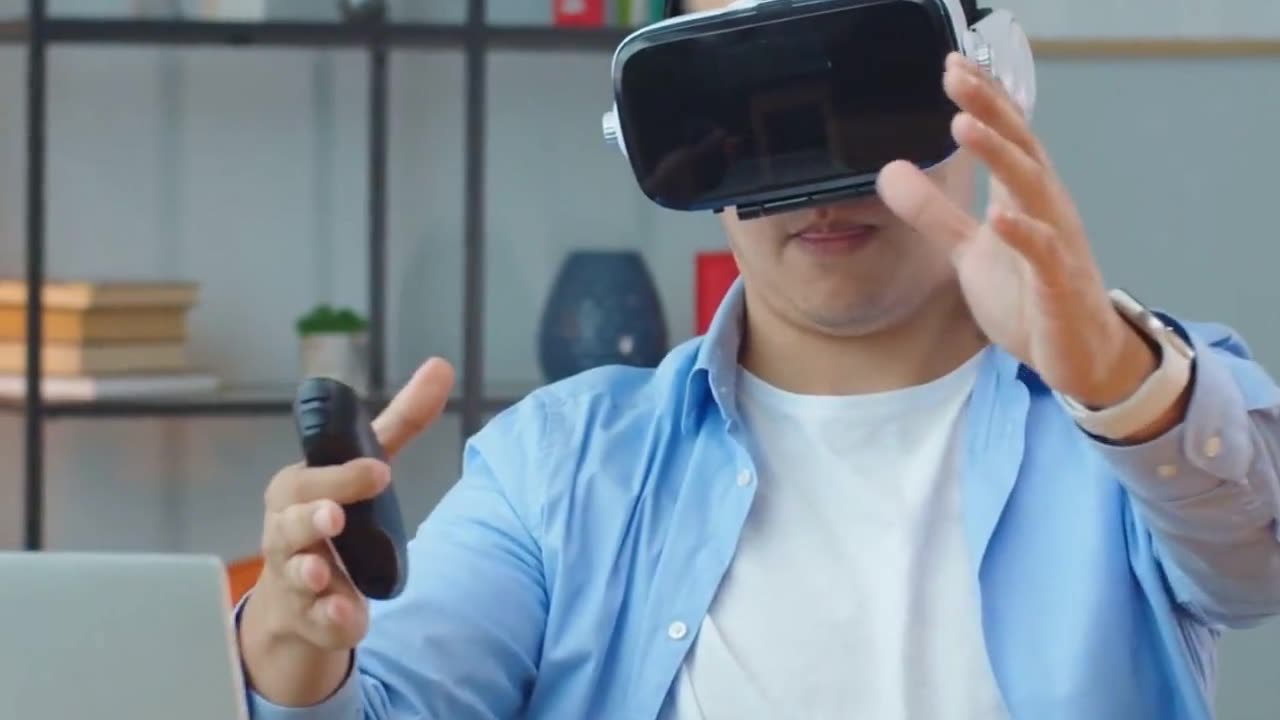Premium Only Content

June 9, 2023
NASA, the National Aeronautics and Space Administration, has been at the forefront of space exploration for decades. One of the critical tools that aid NASA's missions and prepare astronauts for their journeys into space is their state-of-the-art simulator. This advanced technology allows astronauts and scientists to simulate various scenarios, providing invaluable training and insights for space missions. In this article, we delve into the world of NASA's simulator, exploring its capabilities and significance in shaping our understanding of the cosmos.
Unleashing the Potential:
NASA's simulator is a powerful tool designed to replicate the challenging conditions that astronauts encounter during space missions. It combines cutting-edge hardware and software, creating a dynamic environment that mimics space travel. The simulator allows astronauts to experience the complexities of piloting a spacecraft, maneuvering in microgravity, and conducting experiments under simulated conditions.
Realistic Spacecraft Controls:
The simulator boasts an array of realistic spacecraft controls, such as control panels, switches, and joysticks. These controls mirror the actual interfaces astronauts use on spacecraft, enabling them to practice and refine their skills in a safe and controlled environment. The interface provides an immersive experience, allowing astronauts to familiarize themselves with the instruments and systems they will encounter during their missions.
Virtual Reality and Immersion:
NASA's simulator incorporates virtual reality (VR) technology, enhancing the immersive experience for astronauts. VR headsets transport astronauts into a virtual world that mirrors the environment of a space mission. This technology enables astronauts to explore and interact with their surroundings, simulating spacewalks, docking maneuvers, and extraterrestrial landscapes. Through VR, astronauts can better understand the challenges and complexities they may face while exploring the cosmos.
Mission-Specific Training:
Each space mission is unique, presenting different objectives and challenges. NASA's simulator can be tailored to replicate specific missions, allowing astronauts to rehearse and refine their skills accordingly. The simulator can simulate various scenarios, such as docking with the International Space Station (ISS), lunar landings, or even interplanetary voyages. By recreating these scenarios, NASA ensures that astronauts are well-prepared for the specific demands of their missions.
Data Collection and Analysis:
In addition to training astronauts, NASA's simulator serves as a valuable tool for data collection and analysis. The simulator records vast amounts of data during training sessions, including astronauts' responses, physiological readings, and spacecraft performance metrics. This data provides valuable insights into human factors, spacecraft functionality, and mission planning. By analyzing this information, NASA can identify areas for improvement and optimize future space missions.
Pushing the Boundaries of Exploration:
NASA's simulator plays a pivotal role in expanding the boundaries of human exploration in space. By providing a realistic and controlled environment, it equips astronauts with the skills and knowledge necessary to overcome the challenges they will encounter. The simulator allows NASA to test new technologies, refine mission plans, and enhance the safety and success of future space endeavors.
Conclusion:
NASA's simulator stands as a testament to the agency's commitment to pushing the boundaries of human exploration. By harnessing the power of advanced technologies, it enables astronauts to prepare for the demands of space missions and offers invaluable insights into the intricacies of space travel. As NASA continues to explore the cosmos, the simulator will remain a vital tool in shaping our understanding of the universe and paving the way for further discoveries
-
 2:50:22
2:50:22
TimcastIRL
12 hours agoTrump Hits China With 125% Tariff, Pauses Others, Sees LARGEST Market Rally IN HISTORY | Timcast IRL
369K235 -
 1:43:15
1:43:15
Glenn Greenwald
14 hours agoTrump's Tariffs: A Threat to the Neoliberal Order? With Journalist David Sirota; Biden CBP Fabricated Doc to Help Imprison Bolsonaro Adviser? Plus: Israel Support Collapsing | SYSTEM UPDATE #436
212K124 -
 15:04
15:04
T-SPLY
16 hours agoMSNBC Accuses Trump Of "Snatching" Illegal Immigrants For Political Show
98.3K42 -
 2:01:37
2:01:37
Melonie Mac
16 hours agoGo Boom Live Ep 44!
139K39 -
 LIVE
LIVE
SikeSzns
3 hours agoForza Horizon 5
71 watching -
 2:56:40
2:56:40
BigDaddySlick78's Live Gaming Channel
4 hours ago🔴 Call Of Duty Warzone Rebirth Island & Area 99 Live w/ Subs #callofduty #warzone #bo6 #cod
14.6K -
 49:41
49:41
BonginoReport
15 hours agoKristi Noem Honors Angel Mom After Son's Brutal Murder - Nightly Scroll w/Hayley Caronia (Ep.23)
168K80 -
 45:22
45:22
Stephen Gardner
13 hours ago🔥WTF! Dan Bongino’s CRYPTIC ARREST message!
143K127 -
 1:30:16
1:30:16
2 MIKES LIVE
14 hours ago2 MIKES LIVE #203 Lone Survivor with Donna Axelson and Adam Flynn!
86.8K -
 1:18:49
1:18:49
Kim Iversen
16 hours agoEXPOSED: Inside Tim Pool’s Secret Meeting with Netanyahu | Trump’s Tariff Gamble: Boost for America or Death Blow?
227K517